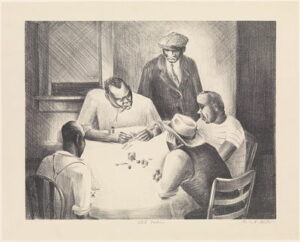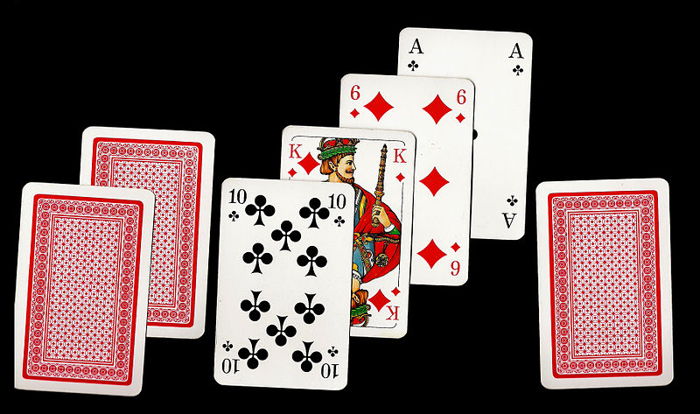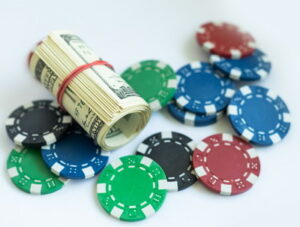
It actually comes as a surprise to many, but Stud poker is quite a bit older than the more popular forms of poker today such as Texas Hold’em and Pot Limit Omaha.
In fact, before Texas Hold’em was even a thing, Stud was the game of choice for the average poker player and there are a few differences between them all.
Here are some of the key differences between Stud Poker and Texas Hold’em Poker.
- In all Stud poker games, players are dealt a personal hand consisting of up facing cards and down facing cards.
- There is no dealer button in Stud and the flow of the game is dictated by the strength of the upward facing cards.
- Stud is almost always played in a fixed limit format unlike Hold’em which can be played in a no limit format.
- There are no blinds in Stud, instead players pay an ante, and the first player to act pays a bring in fee.
- In Stud, the rounds are known as streets, as in third street, fourth street, fifth street rather than flop, turn and river, etc, although on occasions seventh street can be referred to as the river.
The Typical Flow Of Action In Stud Poker Games

- Antes are paid before each player is dealt three cards, two down facing cards and one up facing card. The up facing card that is visible to the rest of the table while the downward facing cards are only viewable to the player holding them just like hole cards in Hold’em or Omaha would be. By now, all of the players will building the pot by paying the aforementioned antes.
- The player holding the weakest up facing card is then required to bring in the action. Hence, a player with a Deuce would then have to act first on the first betting round which in Stud is known as third street.
- Should there be a scenario where two players share the same lowest up facing card, the ranks are decided by suit which are ranked in alphabetical order so clubs, being the highest, outrank diamonds, hearts and spades in that order.
- The bring in player has two options. They can either pay the bring in amount, or complete to the size of the small bet which would be a larger bet amount than the bring in. They would normally complete to the small bet size if they like the strength of what they are holding.
- The betting action then proceeds based on the options That will have been outlined in the glossary entry under action and play moves in a clockwise direction, just as with a regular game of poker.
- Because Stud is typically played with a fixed limit betting structure, there is a cap on how many raises are made on each street. Players are advised to read the glossary entry under structure for more information on this part of the game.
- Next, a second up facing card is dealt to everyone at the table before the fourth street betting round proceeds.
- The rest of the action starts with the player with the strongest up facing cards which will also be the case on every subsequent street. On the fourth street, players must use the small bet sizing with the only exception being when a player has an exposed pair as their two upward facing cards. In cases such as this, they have the option of utilising either the small bet or the big bet sizing. Whichever sizing they select, the action continues in increments of this sizing for the duration of fourth street.
- A third up card is then dealt to each player at the table before the fifth street betting round commences. On fifth street, action plays out in increments of the big bet regardless of the hand strength of any player’s upward facing cards as using the small bet sizing will no longer an option.
- Next up, a fourth upward facing card is dealt to every player at the table and the sixth street betting round gets underway. As with the previous street, players are required to use the bigger bet sizing on this street. By now, every player left in the game should have two downward facing cards and four up cards.
- One last and final down card is then dealt to each player at the table and the seventh street betting round commences. This final round of betting occurs in increments of the big bet sizing.
- Once the betting on seventh street is over, showdown is reached and all of the remaining players in the hand then reveal the final strength of what they are holding. As always, the best hand takes the pot with hand ranking rules being the same as they would be in games of Texas Hold’em and Omaha.
Basic Rules Of Stud Poker Games
 Stud poker games can be played with up to as many as 8 players at the table, but any basic maths will tell us that there might not be enough cards in the deck for everyone. So, if there are eight players that all have seven cards then 56 cards are required, with a standard deck only containing 52 cards.
Stud poker games can be played with up to as many as 8 players at the table, but any basic maths will tell us that there might not be enough cards in the deck for everyone. So, if there are eight players that all have seven cards then 56 cards are required, with a standard deck only containing 52 cards.
However, this scenario almost never happens since at least one, but normally most, of the players will have folded on an earlier street. In the unlikely event that all eight players are still involved in the hand by the time we reach the river, then the final card is instead dealt acting as a lone community card which all of the players can use to make up a five card hand.
Players should also note that Stud can also be played in a hi/lo split pot format and as well as in a lowball format known as Razz. There are a huge number of different Stud games, that all have similar characteristics, but different exact rules.
How To Use Stud As Part Of Your Poker Strategy
 One important factor that distinguishes Stud from community card poker variants is the vast amount of information that is displayed on the table at any time. Strong players will look at all of his opponents’ up facing cards and weigh up all of the relevant card removal effects.
One important factor that distinguishes Stud from community card poker variants is the vast amount of information that is displayed on the table at any time. Strong players will look at all of his opponents’ up facing cards and weigh up all of the relevant card removal effects.
A quick example here would be if we are dealt AC- 8C – 9C on third street. The majority of this hand’s value will depend on the probability of making up a flush by the river. If a high number of your opponents are dealt clubs on third street, then the value of the hand will go down.
If none of your opponents have clubs, then it will mean that a higher number of clubs are, on average, still remaining in the deck. Any time that you are drawing to a made hand, you will need to take into consideration which of your outs is still alive.
Your opponent’s board can give away a great deal of information about the strength of their holding. For instance, if your opponent is holding the following board (xx) 5C – 6C – 7C – 8C (x), then it should be fairly obvious that they could easily be holding a straight or a flush.
Maybe you have three of a kind which can normally be considered to be relatively strong. However, in the face of your opponent’s board this might need to be discarded. And, in fact, even your own board can provide you with the clues that you need regarding the strength of your opponent’s hand.
Should your own board indicate that you might have put together a strong made hand, any aggression from your opponent should be treated with some respect. If they are still happy to play aggressively despite knowing that you could be very strong, then the likelihood is that they have an even stronger hand themselves.
